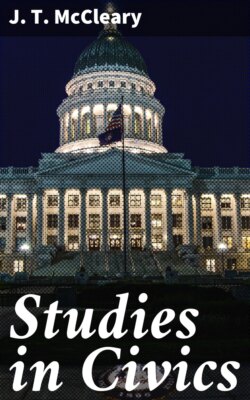Читать книгу Studies in Civics - J. T. McCleary - Страница 22
На сайте Литреса книга снята с продажи.
THE TRIAL.
ОглавлениеOpening Statement.—The usual procedure is as follows: After the jury has been sworn, the plaintiff's attorney reads the complaint and makes an opening statement of the facts which he expects to prove. The purpose of the opening statement is to present the salient points of the case, so that the importance and bearing of the testimony may be readily seen by the jury.
Evidence.—The evidence [Footnote: The most important Rules of Evidence are given in chapter VII.] for the plaintiff is then introduced. Each witness, after being duly sworn, gives his testimony by answering the questions of counsel. After the direct examination by the plaintiff's attorney, the witness may be cross-examined by the attorney for the defendant. When the evidence for the plaintiff is all in, the defendant's attorney makes his opening statement, and then the witnesses for the defense are examined. The direct examination is now, of course, conducted by the counsel for the defendant, and the cross-examination by opposing counsel. When all the evidence for the defense has been introduced, the plaintiff may offer evidence in "rebuttal," that is, to contradict or disprove new matter adduced by the defense. And the defendant may then introduce evidence to refute matter first brought out by the rebuttal.
Argument.—The case is now ready for "argument." One attorney on each side addresses the jury. Each tries to show that the evidence adduced has proved the facts alleged in his pleadings, and each asks for a decision in favor of his client. Usually the side upon which rests the burden of proof has the closing argument.
Counsel must confine themselves to the law, the admitted facts and the evidence.
Verdict.—The jury then retire in care of an officer to a room set apart for their use. Here they deliberate in secret. If after a reasonable time they cannot agree, they are discharged, and the case stands as if no trial had taken place. But if they agree they return to the court room and render their verdict. This is given by the foreman, and is assented to by the rest.
Judgment.—After the verdict, the justice enters judgment in accordance therewith. Judgment may include certain sums of money allowed to the successful party in part compensation of his expenses. Such allowances and certain court expenses are called "the costs."
